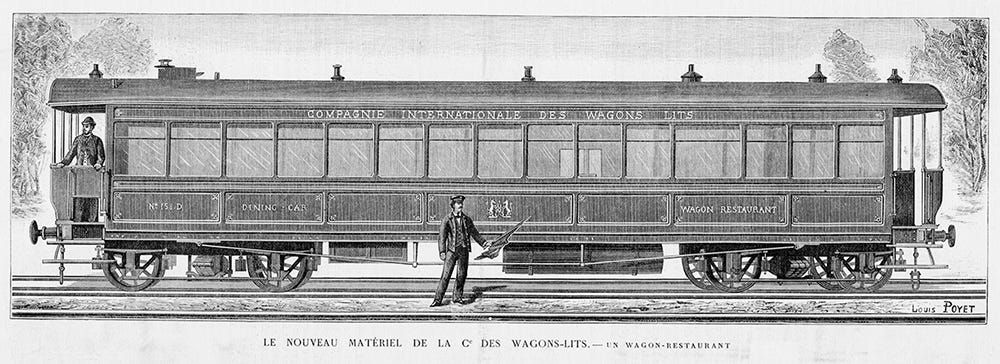Featured Antique — A Rare Charlotte Mold with a Special History
Imagine you're on a train ...
Last fall on a shopping trip, I came across a Charlotte mold. The minute I picked it up, I noticed it was special — and different from those we’ve purchased in the past. It was heavier than usual, and the details more refined, so I looked a little closer.
This particular Charlotte mold had two distinctive stamps. First was the stamp of the maker: LeFevre Fréres. Second, a very prominent “W L.” After twenty years of looking at antique copper I had an inkling of it’s history, but was eager to know more. We bought it.
Backstory — The Orient Express
In 1869, a Belgian engineer named Georges Nagelmakers was traveling through the United States and noticed the train he was on had sleeping, restaurant, and salon cars. After returning to France in 1876, Nagelmakers went on to create the Compagnie Internationale des Wagons-Lits, a company that would build and operate a new class of trains throughout Europe: trains with dining cars, sleeping compartments, and observation decks. Seven years later “The Orient Express” was born.
Each luxury train had its own kitchen, and each kitchen had a full batterie de cuisine: every pot, pan, gratin, and utensil needed to go into battle, as the French name alludes — pieces of exceptional quality, made by only the best cookware manufacturers, and stamped with the distinctive “W L” (Wagon-Lits). Even today, pieces stamped with “W L” are instantly recognizable for their quality, heft, and finishing detail.
— now more about this Charlotte mold
This Charlotte mold was made in Villedieu les Pöeles in Brittany, and dates to the early 1900s based on the maker’s mark and the lack of a train number. Earlier pieces were proudly stamped with such to keep them from being stolen.
Due to its weight and excellent condition, restoration of this mold was fairly straightforward: The existing tin lining was removed, a new tin lining was applied, and the mold was polished to a mirror finish.
How would it be used
I loved watching Julia Child make an Apple Charlotte on “The French Chef!” It’s the perfect size for a large chocolate soufflé or, of course, a Charlotte cake, which I haven’t quite worked up the courage to try.
I also haven’t quite worked up the nerve to sell the piece. Until something better comes along, it’s holding a place of pride in our kitchen.







What a beautiful story and such a deep dive on the provenance of a wonderful piece. I love that you restore the past and hopefully make people realize there is a beautiful history in handing things down with stories and such, instead of simply clicking and putting in the cart. I had no idea of the history of the Orient Express and that the idea came from the United States. I've been such a fan of rail travel and the romantic notion of it all. Again, thank you for the amazing things you do.
I have one of these as well. The original owner worked on the corporate side of the rail lines in Europe. When WL was dissolving they auctioned off a lot of the copper. He took a piece home and it eventually wound up in my hands via his grandson! They are so beautiful.